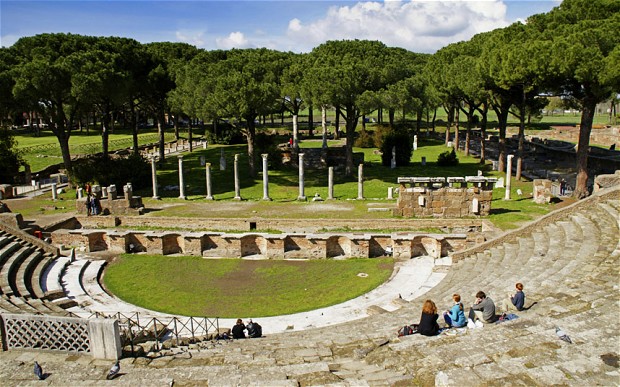Ostia Antica; still a lot to discover
Ostia Antica, the ancient seaport town that is next only to Pompeii in its impressive state of preservation, is apparently much bigger than was originally thought, Roman and British archeologists said recently. A second part of the ancient Roman port has been unearthed indicating that in the first century B.C., the city of Ostia was far more extensive than initially believed and existed on both sides of the Tiber river, not just on one side as was previously believed.
A geophysical survey conducted by a team from the University of Southampton, Cambridge University and the British School at Rome, in collaboration with the Soprintendenza Speciale per I Beni Archeologici di Roma, used a technique known asmagnetometry to discover a new section of the towered boundary wall at Ostia while conducting a survey of an area between the port and another Roman port called Portus – both of which are about 30 miles from the Italian capital.
The study also revealed the existence of three huge, previously unknown warehouses, larger than those that have already come to light in excavated Ostia, and another major building with rows of columns running north to south, the function of which cannot now be determined. All of this indicates that the city continued on the northern side of the Tiber into an area known as Isola Sacra (Sacred Island)
Under the Roman Emperor Claudius, ancient Ostia, located at the original mouth of the Tiber (Ostia meant “mouth” in ancient Latin) , was built into a massive seaport complex. It was expanded further under successive emperors such as Trajan and Hadrian and served as a base for many of the empire’s greatest military and naval expeditions. Ostia was also the depot through which the grain, wine and other supplies needed to feed imperial Rome were channeled.
There have been other interesting recent finds at Ostia Antica. Last July, the remains of a Roman mausoleum and a domus (an upperclass dwelling) with a beautiful polychrome marble-covered pavement, from the fourth-fifth century AD. has recently came to light . And in April 2011, an 11-metre section of ancient ship emerged from some four meters below ground implying that current thinking about the exact location of the harbor and the coastline itself may have to be revised. Attempts to restore the vessel, in which there reportedly were the remains of ropes and cables, are currently underway.



